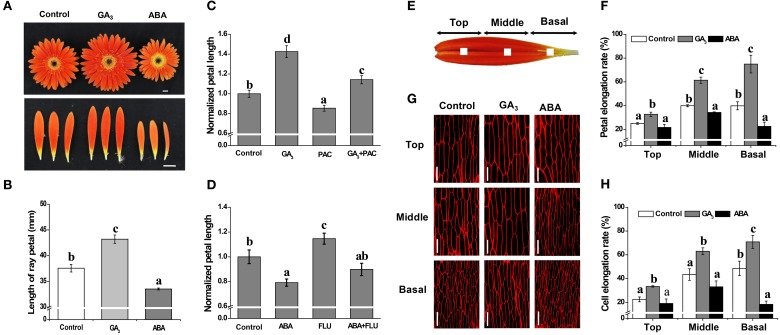Figure 1.
Antagonistic effects of GA and ABA on growth of petals in G. hybrida. G. hybrida was grown in a greenhouse under the conditions described in Materials and Methods. Plants with inflorescences at stage 1.5 were sprayed with deionized water (with 0.1% ethanol) (Control), 10 μM GA3 or 50 μM ABA and were subjected to morphological characterization (A) and petal length measurement (B) after 9 days of treatment. Sixty or more ray petals were measured for each treatment and the value are given as average lengths ± SE. Representative examples of inhibition of GA- or ABA-derived effects on petal growth by PAC (10 μM) or FLU (0.1 μM) are shown in (C,D), for which the control petal length was set as 1. One mm2 blocks at the center of the top, middle or basal regions of the petal are indicated in (E). Detached petals treated with Control, 10 μM GA3 or 50 μM ABA for 9 days were used for morphological characterization of adaxial epidermal cell using a confocal microscope (G) and measurement of elongation rate of each petal region (F, n = 10) or cell (H, n > 100). Three biological replicates were performed for each measurement. Values are given as mean ± SE. Letters above the bars indicate significant differences between the respective values (p < 0.05). Scale bar represents 1 cm (A) or 50 μm (G).

